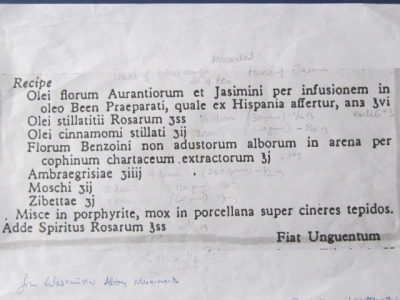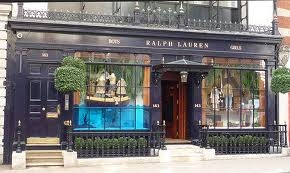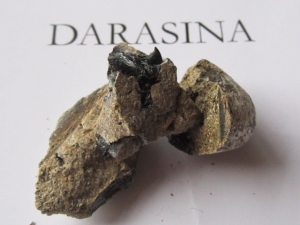THE CORONATION ANOINTING OIL
1953- The newly crowned Queen Elizabeth II.
1851 – Moby Dick is published. Herman Melville’s storyteller Ishmael offers a discourse on the dignity of whaling. ‘……. Think of that, ye loyal Britons! We whalemen supply your Kings and Queens with coronation stuff’. Ishmael alludes here to sperm oil ‘……. the sweetest of all oils’ and not to ambergris, the digestive secretion produced by the whale to ease passing of indigestible matter such as bony beaks of squid.
1559 – At her coronation Elizabeth I comments on the holy oil as being ‘greasy and smells ill’.
1626 – For the coronation of Charles I a more fragrant formula is devised by the celebrated court doctor Theodore de Mayerne. The Huguenot had been physician to Henry IV of France and his Queen consort, Marie de Medici. The marriage of their daughter Princess Henrietta Maria and Charles took place on 13th June 1625 heralding a continental love of perfume in the Court of St. James’s.
The blend is prepared by the Royal Apothecary Nicholas le Myre.
Courtesy of Westminster Abbey Muniments.
The recipe includes neroli, jasmine, rose, cinnamon, benzoin, ambergris, musk and civet; a mix of oils and solids warmed then diluted to a liquid state. Oleo Been refers to moringa seed oil much used in oil based perfumes since antiquity.
The oil is formulated more on aesthetic lines than on any biblical reference.
1649 – The Commonwealth. Diagnosed by de Mayerne as suffering from ‘valde melancholicus’ Cromwell orders that the coronation regalia be ‘totally broken’ as being symbolic of the ‘detestable rule of kings’. The anointing vessel – a gold ampulla and the silver gilt dispensing spoon said to date back to the coronation of King John in 1199 are sold off.
The puritan has since been found to appreciate scent – Exhibition: Perfumes for the Protector www.telegraph.co.uk/history/9248773/Oliver-Cromwell
1660 – Restoration of the Monarchy. A new ampulla in the form of a golden eagle is supplied by goldsmith Robert Vyner and the anointing spoon sold off for sixteen shillings is returned and decorated with freshwater pearls for the coronation of Charles II in 1661.
Charles II favourite dish is eggs and ambergris.
1837 – The Coronation of Queen Victoria. Over the years the formula for the anointing oil has evidently changed since Peter Squire, appointed Chemist in Ordinary to the court pharmacy by Victoria, prepares a ‘new’ blend based on the 1626 recipe – it contains sperm oil. However, Queen Victoria hates the oil and can’t wait to wash if off saying that it is sticky and overpowering…..
1902 – …..so sticky that by the time of the coronation of Edward VII the oil has coagulated and a new batch is prepared.
1941 – Westminster Abbey is hit by German incendiary bombs – the Deanery is gutted by fire.
1953 – In preparation for the coronation of Elizabeth II, the vial of anointing oil last used at the 1938 coronation of her father George VI has been traced back to is storage in the Deanery. The consecrated oil is either deemed missing, destroyed or not fit for use.
Panic sets in at official level when it is established that the maker and recipe keeper of the oil has gone out of business. Squire and Co, chemist and royal warrant holders had held this position since 1836 only to be acquired in a business takeover by Savory and Moore, the dispensing chemist in 1950. They have no idea of the recipe.
According to reports, officials track down the recipe either from a former employee of Squire and Co or perhaps from notes kept by the granddaughter of Peter Squire or from the British Library where the original hand written formula is kept.
The Surgeon Apothecary J P Loring hands the recipe to J D Jamieson of Savory and Moore for the oil to be made up at short notice. It is blended on the premises of the dispensing chemist at its flagship store 143, New Bond Street, London.
Savory and Moore are themselves acquired in 1967 by Macartheys who are now part of The Lloyds Pharmacy Group under the parent company Celesio AG.
A vial of the formulation lightened with sesame oil is presented to the Dean of Westminster to arrange for its consecration – the Bishop of Gloucester performs the blessing.
1953, June 2. – Inside Westminster Abbey 8,000 guests along with 27 million BBC television viewers witness the coronation of Queen Elizabeth II. Dutifully and obediently the cameras look away from the lowered concealing canopy carried by Four Knights of the Garter. Hidden from gaze, the soon to be crowned Elizabeth sits in King Edward’s chair wearing the simple, austere anointing gown. The Dean of Westminster pours the oil from the ampulla into the anointing spoon and the Archbishop of Canterbury, Geoffrey Fisher with fingers dipped into spoon anoints the monarch on the hands, head and heart.
In this most sacred and spiritual element within the service the monarch is dedicated to God in their undertaking and obligation to the Crown.
And as Solomon was anointed King
by Zadok the priest and Nathan the Prophet,
so be thou anointed, blessed, and consecrated Queen
over the Peoples, whom the Lord thy God
hath given thee to rule and govern,
In the name of the Father, and of the Son,
and of the Holy Ghost. Amen.
The sovereign of the United Kingdom is the last anointed monarch.
2012 – The artist Tom Railton commissions Darasina to make a re-creation of the Charles I anointing oil for use in his artwork ‘Unction’.

All the ingedients are used with the exception of an animal dervied musk. In a diluted state the oil is nevertheless overwhelmingly heady – far too strong to be used in the damp, heavy air of that June day inside Westminster Abbey.
Further diluted the oil smells extremely pleasant; a classic ambery oriental using a considerable quantity of ambergris.
2013, June 2 – The sixtieth, diamond jubilee anniversary of the coronation of Queen Elizabeth II.
1851 – Moby Dick published ‘………. I have it, I have it’ cried Stubb, with delight, striking something in the (whale’s) subterranean regions, ‘a purse! a purse!’ Dropping his spade, he thrust both hands in, and drew out handfuls of something that looked like ripe Windsor soap, or rich mottled old cheese; very unctuous and savory withal.
‘Who would think, then, that such fine ladies and gentlemen should regale themselves with an essence found in the inglorious bowels of a sick whale!’
The ambergris smells of cigars and the ocean. It adds a velvety lusciousness to a blend. In perfumery ambergris has been superseded by synthetic substitutes. Ambrox is made by the giant flavours and fragrance company Firmenich SA who also develop perfumes for labels including Armani, Yves Saint Laurent and Ralph Lauren.




